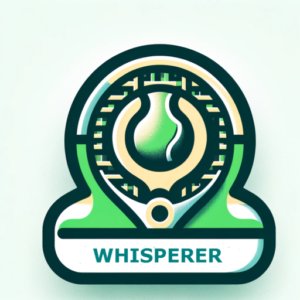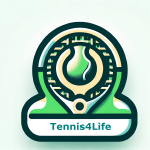Playing the Long Game: Tennis for Life and Beyond
Tennis for Life: Building the Player You Want at 90
Imagine striking a forehand at 85 with the same steadiness and purpose you had at 45. This isn’t fantasy — it’s the promise of what Dr. Peter Attia calls the “Centenarian Decathlon,” a blueprint for aging with strength, autonomy, and joy.
For competitive tennis players, training for longevity means putting your most fundamental skills — ball watching, balance, and rhythm — at the heart of your program.
Dr. Attia encourages everyone to define ten physical tasks they want to perform effortlessly in their 80s or 90s. For lifelong tennis players, this list might include:
-
Tracking the ball cleanly from racket to contact
-
Serving pain-free through a full match
-
Recovering wide balls with confidence
-
Finishing points at net with poise
-
Walking onto court independently, ready to play
These aren’t feats of athleticism — they’re measures of control, clarity, and resilience. The very same pillars that define great tennis and independent living.
The Most Critical Skill: Ball Watching
Tennis begins and ends with the eyes. Your ability to read the ball in real time — not just see it, but truly track its speed, spin, and trajectory — shapes every movement and decision on court. As we age, this skill becomes even more vital, and more vulnerable.
The changes aren’t just about reading glasses or straining to spot the ball at the baseline. Even subtle declines in visual clarity can erode your timing, disrupt footwork, and lead to mis-hits. One of the most overlooked yet impactful causes? Dry eye syndrome.
Often dismissed as a minor irritation, dry eye syndrome can significantly impair visual performance. It causes a gritty or burning sensation, along with intermittent blurred vision — symptoms that worsen after prolonged concentration, like during extended rallies. This leads to slower reactions, visual fatigue, and mistimed contact. Fortunately, lubricating eye drops offer a simple fix: restoring clarity, reducing irritation, and helping you stay visually sharp from first point to last.
Whisperer Tip – Ball Watching: Develop soft-focus vision using our whisperer ball-can drills that simulate visual tracking under pressure. Practice scanning from your opponent’s hips to the contact point rather than locking in on the ball too early. This switch from reactive seeing to anticipatory reading expands your court coverage — and extends your competitive edge by years.
Balance: Your On-Court Anchor
You can’t strike a clean ball or finish a rally without balance. From groundstrokes to serves to recovery steps, it underpins every phase of play. Balance allows you to load your legs before a shot, rotate with control, and finish in position. It’s the quiet force behind efficient movement — conserving energy, reducing strain, and sharpening timing.
As you age, maintaining balance becomes even more crucial. It helps prevent falls, protects your joints, and preserves your ability to move confidently. But balance isn’t just about standing still — it’s about staying centered through motion. That’s why your training should focus on dynamic stability: integrating vision, footwork, and body awareness.
Whisperer Tip – Balance: Use eye-foot crossover drills to build dynamic stability and elevate court awareness. These drills teach your feet to respond to visual cues with rhythm and precision — the foundation of balanced, injury-resistant tennis.
Rhythm: The Secret to Timing and Longevity
Rhythm isn’t musical — it’s neurological. A player in rhythm isn’t rushed, even under pressure. It’s how older players keep up with younger ones: not by moving faster, but by moving smarter and avoiding injury.
Whisperer Tip – Rhythm: Anchor your rhythm with rituals and visualization. Begin each drill or point with a consistent pre-movement cue — a bounce, breath, or sway. Visualize the timing of your movement from hip coil to contact to recovery. These routines act as internal metronomes, syncing your body to the match’s tempo.
Cardiovascular Training: Extend the Rally of Life — Better on Two Wheels
VO2 max isn’t just a performance metric — it’s a powerful predictor of healthspan. Dr. Attia’s cardio protocol includes:
-
4 weekly Zone 2 sessions to build aerobic base
-
1 weekly Zone 5 session to maintain peak cardiovascular power
Whisperer Tip: Use cycling to lock in Zone 2 rhythm — your foundation for endurance and recovery. Add hill sprints to mimic tennis demands. Cycling protects joints and builds leg stamina while strengthening the heart and sharpening recovery.
Fueling Recovery: Nutrients That Support the Game
What you eat fuels your performance and shapes your aging trajectory. Key nutrients from Dr. Attia’s model:
-
Taurine — cardiovascular & mitochondrial health
-
Carotenoids — fight oxidative stress
-
Niacin — replenishes NAD+ for energy & tissue repair
-
Protein — essential for muscle maintenance and metabolic health
Aim for 30–40g of high-quality protein per meal (eggs, fish, chicken, whey) to trigger muscle protein synthesis and preserve mobility as you age.
Build the Player You Want to Be at 90
You don’t rise to your goals — you fall to your systems. The routines you build today shape the strength, clarity, and capability you carry into your final decades.
Whisperer Tip: Make consistency your most powerful skill. A short daily routine that tunes your eyes, steadies your balance, and syncs your rhythm will serve you longer than any last-minute match prep.
Wrap
Tennis for life isn’t about outlasting younger opponents — it’s about evolving into your sharpest, most capable self. The skills that help you win points are the same ones that support clear thinking, fall prevention, and graceful movement into your 80s and beyond.
Proof? Meet Dodo Cheney.
Still skeptical? Consider Dodo Cheney — a legend in senior tennis. She earned over 100 Gold Balls (US National Titles), her final win at age 91, retiring only after a championship loss to “the 89-year-old kid.”
Dodo didn’t just defy age — she redefined lifetime play.




